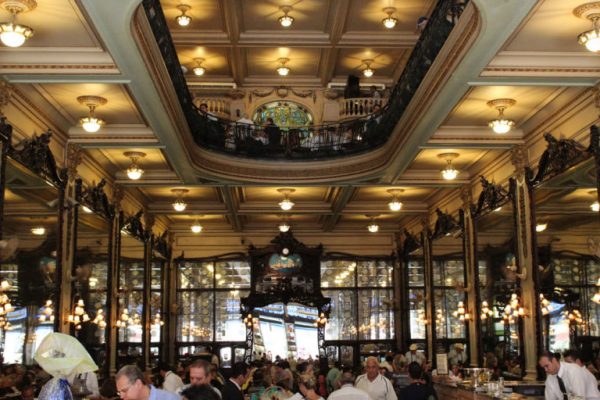Leblon
Immortalized as the setting for several soup operas, Leblon is known for the natural beauty of its beach, quiet streets and gastronomy. The address is the favorite of many celebrities. Today, Leblon is the most exclusive area in Rio de Janeiro and the most expensive square meter in Brazil!
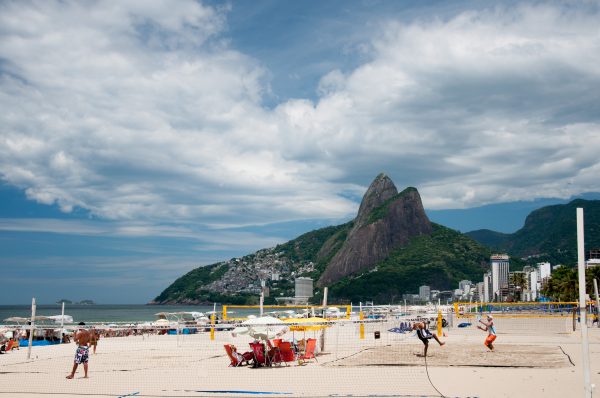
Leblon got its name after Frenchman Charles Leblon bought the old farm that existed in the region. Since then, the neighborhood’s history has gone through several interesting chapters.
The neighborhood was once an isolated fisherman village, it has sheltered quilombos that resisted slavery and held automobile championships. Today Leblon is one of the most desired neighborhoods in the wonderful city! Discover all the tips and curiosities about the most upscale neighborhood in Rio de Janeiro!
WHAT TO DO IN LEBLON
Check out some free options to enjoy the best of Leblon:
LEBLON BEACH
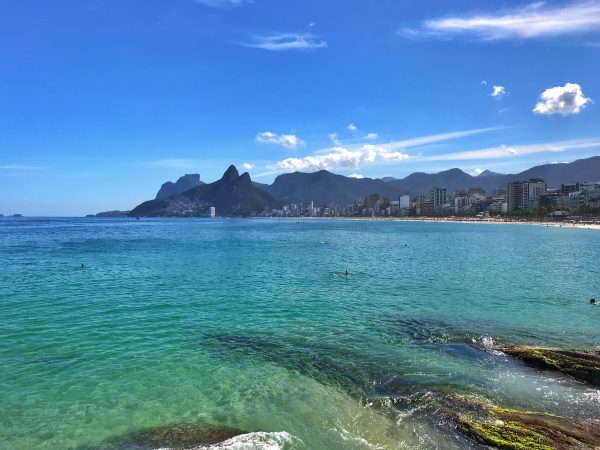
The wonderful view of Leblon beach is one of the biggest attractions of the neighborhood! From the shore you can also enjoy the Two Brother Mountain! Leblon beach has two Postos: 11 and 12.
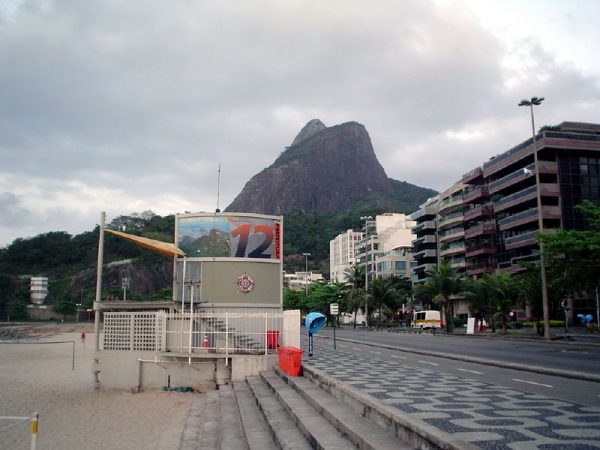
The Postos are very useful for locals as a way of situating ourselves at the beaches. Marking each kilometer, you will find a Posto. Every Posto has toilets, showers and medical care.
Postos are famous for attracting different audiences! Some say Postos 11 and 12 are more exclusive. These are celebrities’ favorite Postos! Postos 11 and 12 are also popular with families.
KIDS FRIENDLY
Next to Posto 12 there is an area called Baixo Bebê. This space is for children. It offers an area with toys and activities for the little ones!
CAIPIRINHA ON THE BEACH!
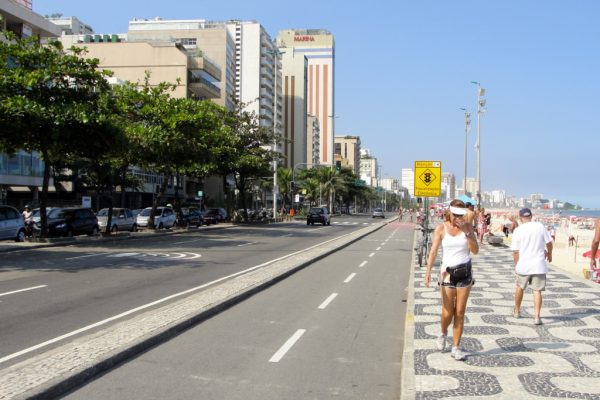
The beach also has several kiosks. One of the most famous caipirinhas on Leblon beach is the Quiosque do Postuguês! It is numbered Kiosk 5 and it is on the sidewalk across Hotel Marina on Av. Delfim Moreira
LEBLON LOOKOUT
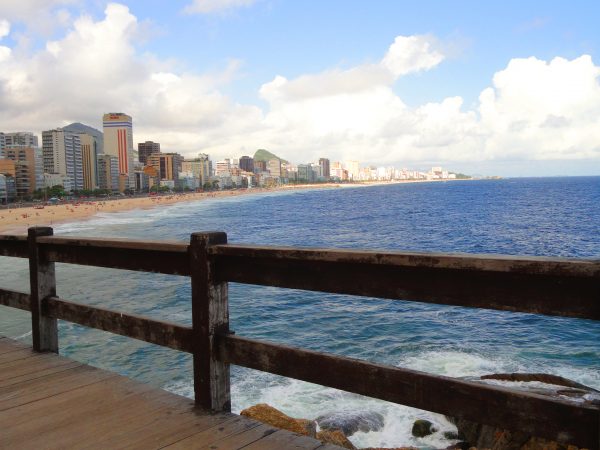
At the end of the beach there is a lookout in a wooden deck! From there we have a privileged view of Leblon, Ipanema and São Conrado beaches! Admission is free! The lookout is one of the best spots to take pictures, drink coconut water and enjoy the beauty of Rio!
Learn more about the Leblon Lookout!
TWO BROTHERS CLIFF PARK
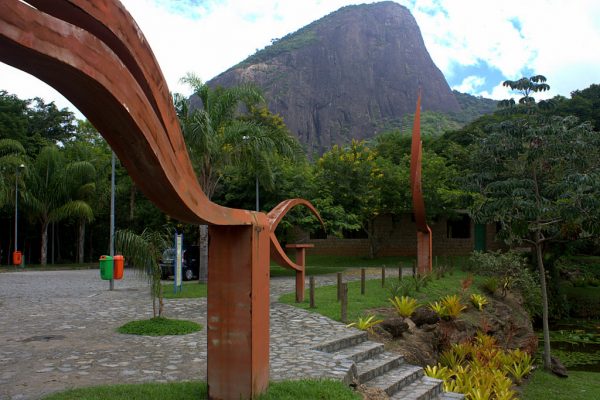
The Two Brothers Cliff Park has one of the best views in the south area! The park has 4 lookouts along a slope. From the lookouts it is possible to see the Rodrigo de Freitas Lagoon, the Botanical Garden and the Corcovado Hill.
In addition to the lookouts, the park offers drinking fountains, bathrooms, sports courts, picnic areas and sculptures by Oscar Niemeyer, one of Brazil’s greatest architects! You can take the route on foot or by car.
The entrance is free of charge and there is also a small parking lot.
Address: Rua Aperana – Leblon.
Opening hours: Tuesday to Sunday, from 8 am to 5 pm.
Learn more about Two Brothers Cliff Park
Jobi
A real icon in Leblon’s bohemian life! Founded more than 50 years ago, Jobi is an excellent option to go after the beach or at the end of the night! The bar is famous for the typical snacks of the best bars in Rio and for the cold draft beer! Jobi also has options of more traditional dishes such as Gomes de Sá cod and dry meat with farofa.
Address: Av. Ataulfo de Paiva, 1166 B – Leblon
Check out our Ultimate List of the Best Bars in Leblon!
Quilombos
At the end of the 19th century, the city of Rio de Janeiro had several quilombos spread over neighborhoods such as Vila Isabel, Engenho Novo, Penha, Laranjeiras and Santa Teresa, including in the forests of Morro do Corcovado.
Quilombo was the name given to communities formed by blacks who escaped slavery. These communities have become one of the forms of resistance to the slave regime. Quilombos first appeared in the Northeast of the country, at the beginning of the Sugar Cycle, around the 16th century.
Undoubtedly, one of the most interesting quilombos was Leblon’s, also known as “Seixas’ Quilombo”. Born in Portugal in 1830, José de Magalhães Seixas came to Brazil at the age of fourteen. For many years, Seixas worked in the trade of bags and other leather goods at his store Downtown.
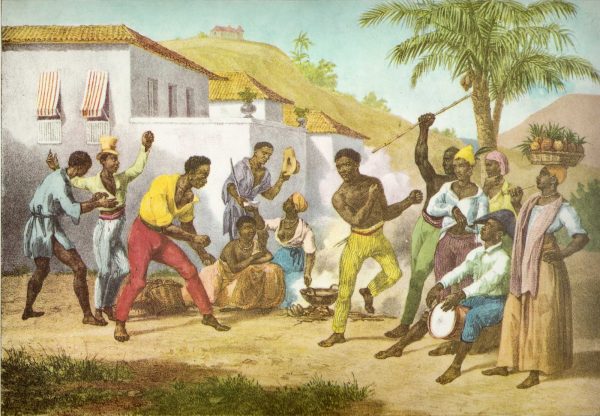
The enterprise was very modern and used machines in the process. Its products were quite successful in Europe. Thus, Seixas raised enough capital to buy the huge farm in the South Zone of the city. On the land, he built a house where today the Federal Club is located, on the slope of the Two Brothers Mountai. Today locals call it Alto Leblon (High Leblon).
The Camellias Farm was the largest property in the neighborhood of Leblon in the 19th century. In the farm had a steam factory and also cultivated camellias, the symbol of the abolitionist movement.
It was common for members of the movement to wear a camellia on their suit as a way of showing which side they were on. The symbology is due to the fact the antislavery movement believed that the end of slavery was proof of civility. Camellias were sophisticated flowers, difficult to grow and therefore related to progress. These flowers were introduced to Brazil in the 19th century.
RESISTANCE AND ABOLITION
An interesting character, Seixas was a successful industrial bourgeois immigrant and trader, who at the same time was active in the largest social movement in Brazil, supporting the abolitionist groups in Rio. He also had the protection of Princess Isabel herself, who also used to visit the Quilombo in his farm. The Princess regularly bought from him the camellias that adorned her worktable in her residence at Laranjeiras Palace, now the current building of the state government.
At the back of the Camellias Farm there was a cave where Seixas sheltered dozens of runaway blacks. A gate covered with crown of thorns hid the entrance to the cave. The disguise protected the quilombo from several police raids! In addition to shelter, the quilombo also served as a stage for meetings that discussed actions to end slavery in Brazil. Important figures in the movement, such as André Rebouças, Joaquim Nabuco and Rui Barbosa, were usually present at the stronghold that was also used for manifestations of black culture.
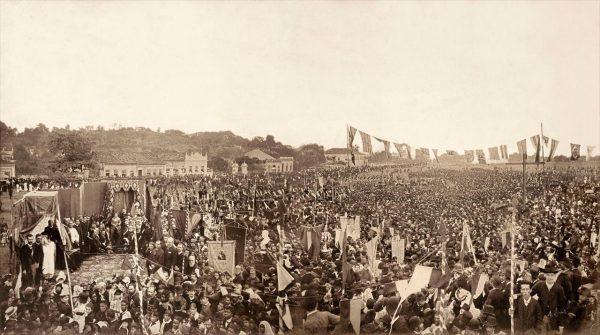
When Princess Isabel signed the Áurea Law, which abolished slavery in Brazil on May 13, 1888, the black people who lived in the quilombo left the cave and went on foot to the Imperial Palace, in the Downtown. They took with them dozens of camellias grown at the farm to deliver to Princess Isabel. Leblon’s Quilombo was seen as a landmark of civilization and modernity. Today we can consider it the highest point in the history of the neighborhood!
THE BEGINNING OF A NEIGHBORHOOD
Leblon’s allotment licensing started in the 20th century. Until the beginning of the century, the Leblon area was an extension of Gávea. It was also a poor area of the city. Without electric lighting (which only reached Ipanema), only fishermen and some small plantations owners lived in the region.
It was only in the first decades of the twentieth century that the public administration turned its attention to Leblon. With investments linked to civil construction, to the provision of public services, such as transportation, water and electricity supply, the region went under major urban transformations in different periods, during different governments. These changes, in addition to its natural attractions, would later make the neighborhood more attractive to the higher classes.
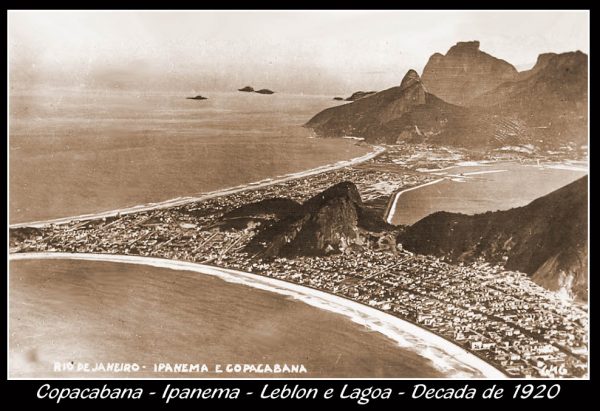
The Leblon allotment and urbanization process only started in 1901, managed mainly by the Ludolf family. The Ludolfs owned most of the land and they also had a stake in Gavea’s Industrial Company.
In 1914, the government authorized the Bothanical Garden Company to extend its tramlines from Gávea and Ipanema to Leblon. The company opened several streets in the neighborhood, including its main avenues. This generated a great attraction for new enterprises in the area. In 1919, Ipanema’s Building Company sold land in both districts. The subdivision plan registered in the City Hall showed the name of the streets and their location.
A KING AT NIEMEYER AVENUE
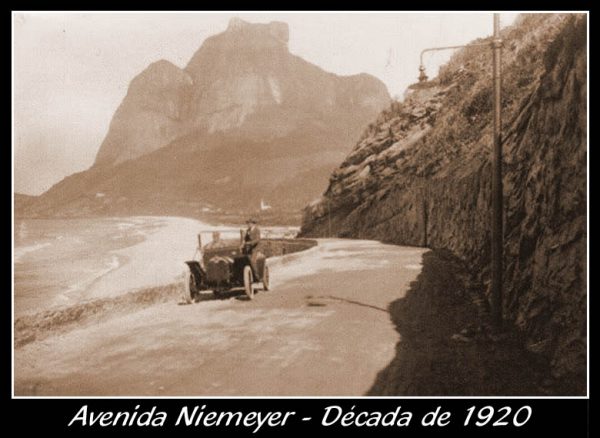
It was during this period that Leblon received two of its most iconic avenues. In 1919, Rio de Janeiro Development Company completed the construction of the Niemeyer Avenue. The avenue received the name in honor of Commander Jacob Niemeyer, who donated these lands to the City Hall.
A curious fact happened a year later when the goverment enlarged and macadamized the avenue on occasion of King Albert of Belgium visiting Rio. For the event, the government also built Delfim Moreira Avenue at the end of Vieira Souto Avenue making the connection to the beginning of the Niemeyer Avenue.
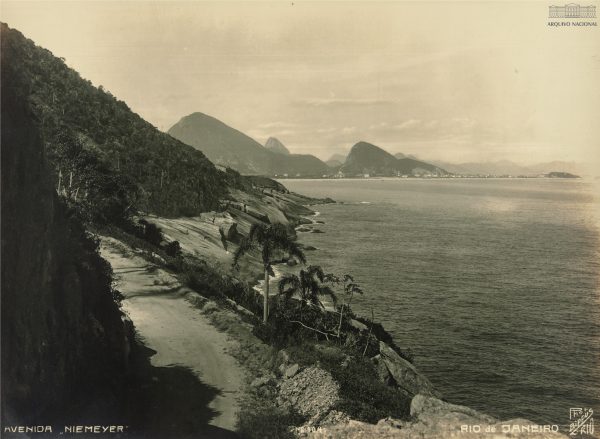
The name was a tribute to the Minas Gerais president who came to take office in 1918 after the death of the elected president, Rodrigues Alves. Thus, Leblon finally had two large modern avenues, paved and lit, continuing the process of expanding the city to the South Zone.
GARDEN OF ALAH
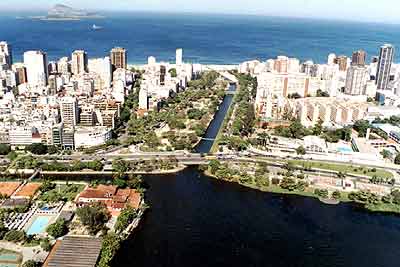
During the administration of Mayor Carlos Sampaio, between 1920 and 1922, the sanitation and beautification works of Rodrigo de Freitas Lagoon began. As a result, the construction of the Barra Canal, now known as Garden of Alah, also began to take the street up to Dias Ferreira Street and Delfim Moreira Avenue and its crossings. The next governor, Alaor Prata, continued the work, extending the Leblon urbanization project.
Along with these infrastructure initiatives, the construction and allotment companies started a strong marketing campaign. The ads highlighted the health benefits of sea bathing! Thus, it sparked the interest of the upper classes and tourists for the natural attractions of the beaches of the South Zone of Rio.
In the following decade, in 1930, the important French urban planner Alfred Agache, responsible for the Remodeling and Beautification of the City Plan, a project by the Mayor Prado Júnior, already considered Leblon as a noble neighborhood, of bourgeois and wealthy residences.
RACING CIRCUIT
It was also during the 1930s that the neighborhood entered the circuit of automobile events in the city of Rio! Leblon held the first competition of the Gávea Racing Circuit in 1933 with the I Grand Prix of the City.
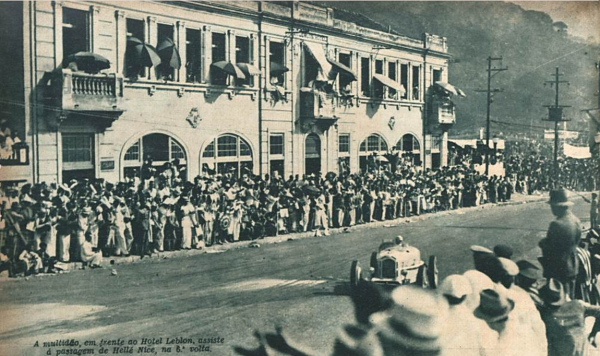
The competitors went down to Visconde de Albuquerque Avenue and passed through the Niemeyer Avenue, returning by the Gávea Road. Automobile events were very popular in the city and attracted many participants, national and foreign! The last competition took place in 1954.
THE REAL ESTATE MARKET
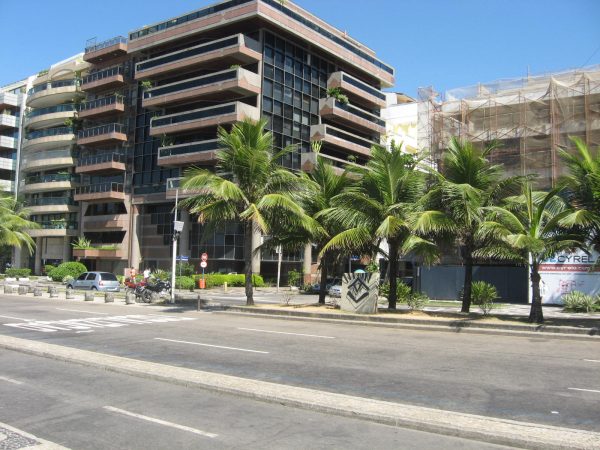
In the second half of the 20th century, the appreciation of the area led to real estate speculation. During this period, many traditional mansions were demolished for the construction of luxurious buildings. In this context, it became imperative to remove the popular occupations that differed from the high class real estate aspirations of the neighborhood.
Over the years, a series of favelas has formed around the Rodrigo de Freitas Lagoon. The development of the city’s South Zone increased the demand for jobs in the areas of services and civil construction. This attracted residents of the most disadvantaged classes to the region, many of them immigrants from the Northeast of Brazil.
The interest of the real estate market also created great pressure that resulted in the so called hygienist policies. Such policies sought to remove slums from the South Zone and Downtown, taking their residents to precarious and distant social housing. These projects had their most radical period during the governments of Carlos Lacerda and Negrão de Lima, in the 50s and 60s respectively, specially during the military dictatorship.
REMOVAL OF THE FAVELAS
In 1968, the government created the Coordination for the Social Housing Interest of Metropolitan Area (CHISAM in Portuguese) to manage such projects. Soon after, members of the Federation of Favelas of the Guanabara State, with about 100 associated favelas, sent a document to Congress rejecting CHISAM’s removal projects.
The Federation mobilized against the removal of the Ilha das Dragas favela, around the Rodrigo de Freitas Lagoon. Then the police arrested their leaders and threatened them with severe consequences if they opposed again. Thus, the Federation ended the organized resistance and the residents accepted the removal.
PRAIA DO PINTO FAVELA
The greatest example of the brutality of hygiene policies was the largest slum in the region: the Praia do Pinto slum. Formed in Leblon around the 1930s, at the beginning of the construction of the Jardim de Alah canal, the community had a tragic end.
In 1969, the Housing Coordination of Social Interest of the Metropolitan Area (CHISAM), in an official document, declared that the favela “should be totally eradicated” because it is in disagreement with the other buildings in the neighborhood. However, in an organic and peaceful way, the favela residents refused to leave.
On the night of May 11, 1969, a fire broke out in the slum. Although residents and neighbors called the firefighters, they never came. In the morning, the fire destroyed almos everything, facilitating the process of removing the families. The military financed the construction of apartments buildings on the site.
ARCHITECTURAL HERITAGE
Most of the buildings we see in the neighborhood today date from between the 1940s and 1960s. The buildings have an average of 6 floors, in different architectural styles, such as Art Deco, Modern and Postmodern. With the intense verticalization process that neighborhoods in the South Zone went through in the 20th century, there are still few Neocolonial style houses.
Since the 1990s, Leblon, as well as other neighborhoods in the South Zone, has become a Cultural Environment Protection Area (APAC). Thus, the city of Rio de Janeiro stipulates public policies aimed at protecting the architectural complex of the neighborhood, its cultural characteristics and the well-being of the population. Among these measures, it is worth highlighting the limit imposed on new constructions. The measures prohibit buildings that are too tall, which would misrepresent the neighborhood’s identity and increase populational density.
FIRST OCCUPATION
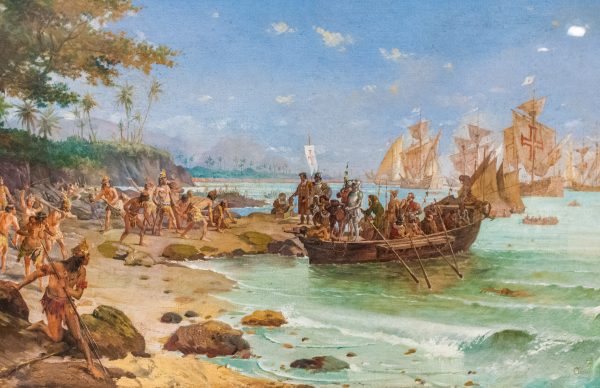
Records show that indigenous tribes occupied the area where Leblon neighborhood is located today long before the arrival of Portuguese colonizers. Some settlements dated back to the 6th century!
The French had already mapped a Tamoio Kariané village in this area in 1558. However, the settlers would later decimate the Tamoio villages in the region. An important figure in this process was Antônio de Salema. A Portuguese jurist from Alcácer do Sal, graduated in Coimbra, Salema took over the government of the Captaincy of Rio de Janeiro and the southern part of Brazil in 1575.
During the 3 years he was in charge of the government, Salema decided to develop his own business in the area. Following the footsteps of his predecessor in the government, the Provider of the Royal Farming Cristóvão de Barros, a pioneer in the creation of the cane mill in Magé in 1573, Salema was willing to create a mill on the site.
In this period of colonization, the Crown created incentives to develop sugar production in Brazil, one of the most attractive was the tax exemption for 10 years.
Seeing great potential in the location full of streams, the mill ran on water. Therefore, the governor decided to attack the villages present in Leblon, Lagoa and Ipanema.
The governor, who had a great aversion to native inhabitants, ordered that clothes worn by people infected with smallpox were thrown on the banks of the lagoon. Thus, it infected entire villages. Today it is considered the first biological war in the Americas.
THE SUGAR CANE FARMS
Salema then ordered the development of a sugar cane plantation, called D’El Rei, where today the Botanical Garden is located. However, in 1584 he sold the farm because the business was not successful.
Years later, the farm owner, Councilman Diogo de Amorim Soares, its name to Engenho de Nossa Senhora da Conceição da Lagoa. Starting in 1609, the business underwent important reforms under the administration of its new owner, Sebastião Fagundes Varela, son-in-law of the former councilman.
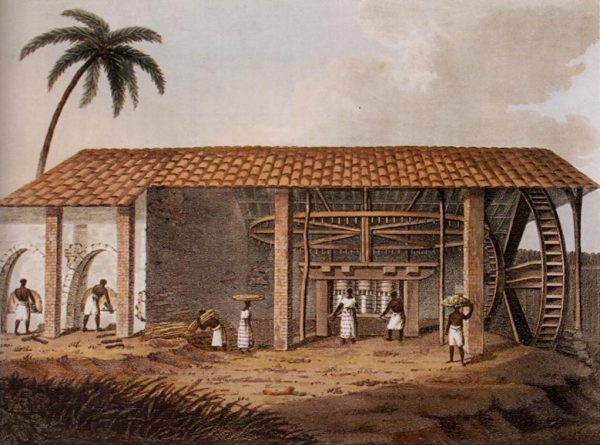
In order to expand the facilities of the farm, Fagundes Varela acquired other lands closer to the edge of the south zone of Rio de Janeiro. The government took the lands from the Tamoio natives and gave it to a few families of Portuguese origin.
The City Councilor Antônio de Pacheco Calheiros owned land that went from Lagoa, passing through the old “costa brava” (now Leblon), to Vidigal. Afonso Fernandes, on the other hand, received a letter from the chamber giving him rights over lands that went from the Sugar Loaf to the João de Souza Beach, today Botafogo. These lands today comprise the entire extension from Leme to Leblon.
RODRIGO DE FREITAS LAGOON
Gradually, Sebastião Fagundes Varela acquired more land. With such expansions, Fagundes Varela started to explore the lands as pasture for his cattle breeding and extracted wood for his farm. His lands comprised the entire extent of the current Humaitá, going as far as Leblon.
Another prominent figure in the family was his great-granddaughter, Lady Petronilha Fagundes, who inherited all these lands. Petronilha was famous for being a thirty year ol unmarried woma. A real scandal at a time when girls were getting married in their teens! Despite being consider a good catch because of her posetions, only in 1702 did Petronilha marry the Portuguese cavalry officer Rodrigo de Freitas de Carvalho, then aged 16! The marriage lasted fifteen years, until the heiress passed away.
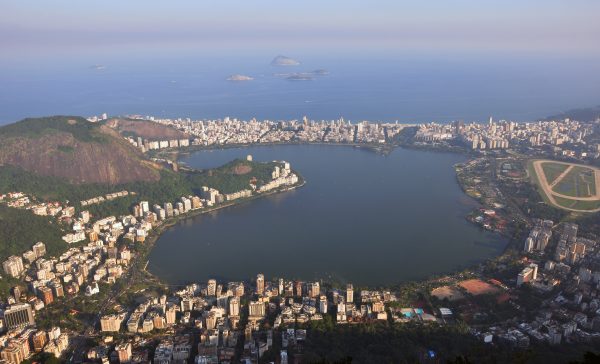
The widower Rodrigo de Freitas returned to Portugal, where he died in 1748 on his farm in Suariba. Their lands in Rio de Janeiro ended up taking his name. To this day, Lagoa Rodrigo de Freitas, which was also part of the immense property, bears his name! Immortalized in one of the most famous sights in the city, his greatest achievement was to have married a wealthy woman!
After the widower’s death, other families bought the divided lands. The area ended up abandoned until the beginning of the 19th century. It is important to note that in this period there was no residential construction close to the beach, because in 1645 the then governor Duarte Corrêa Vasqueanes forbade fishermen to build their houses on the shore for fear of a possible Dutch invasion in Rio de Janeiro.
THE GUN POWDER FACTORY
With the arrival of the Portuguese Royal Family, important changes took place in Rio de Janeiro. In a decree of June 13th, 1808, the Regent Prince Dom João ordered the creation of a gunpowder factory, expropriating the facilities of the old farm. In the surrounding lands, he created the Royal Bothanical Garden, which would later become the Botanical Garden of Rio de Janeiro.
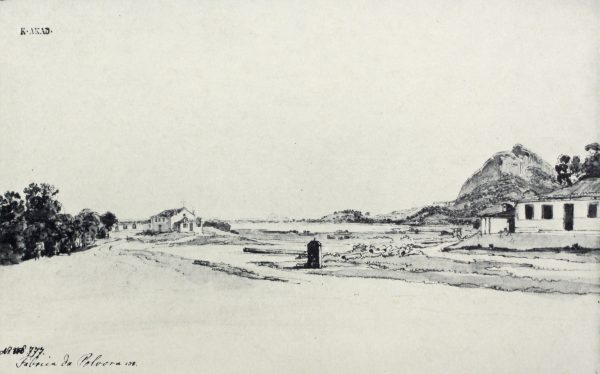
The people did not like the news and in 1809, when he went to visit these lands, Dom João was the target of protests. The manager of the farm and some slaves lowered their pants as the Regent Prince passed by! As a punishment, the guards arrested the slaves, while the manager and the landowners lost all their favors and benefits!
Therefore, Rodrigo de Freitas’ great-granddaughter, Lady Maria Eleonor de Freitas Mello e Castro, lost the right to the land by sentence in 1810, receiving compensation only in 1826. The government transfered the waterfront lands that didn’t serve the purposes of the Bothanical Gardens.
CHARLER LEBLON
In the first decades of 1800, Rio cititzens called the entire border of the southern zone The Copacabana Farm. In 1845, French businessman Charles Leblon bought the land and created his farm at the end of the beach. People reffered to I as the Leblon Field. There, the Frenchman also founded his whale hunting company called Aliança.
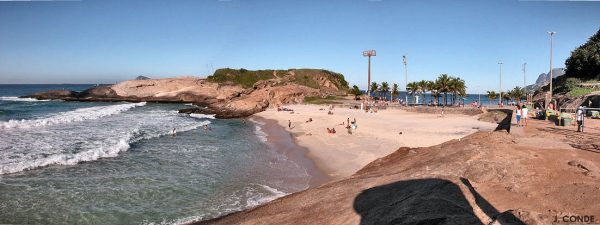
During this period, this activity was quite lucrative in the city of Rio de Janeiro, as spermaceti whales were present on the shore and the demand for their oil was very high. Civil construction used whale oil as a type of cement. Civil construction was experiencing a real boom with stimuli for growth during the Second Empire.
The oil fueled the public lighting system. Since 1841, Dom Pedro II’s projects to expand the public lighting of Rio’s streets with oil-based lamps the product became very profitable. That’s alson wheen another famous sight in the city got its name! The rocks on the beach are called Arpoador (a reference to the spear used to hunt them) because whales were caught from the top of those rocks!
THE END OF WHALE HUNTING
Later, in 1851, the city of Rio de Janeiro started the project to change the lighting system, using gas. Irineu Evangelista de Souza, the famous entrepreneur better known as the Viscount of Mauá, ordered the installation of the first posts on Rua Direita, today Primeiro de Março Street. On March 25th, 1854 the service started running in the city, extending the gas system to other neighborhoods besides Downtown.
Therefore, whale fishing by Rio’s shore ceased to be such a lucrative business, leading Charles Leblon to sell his land in 1857. Francisco José Fialho owned the extensions of the property. The land went from the current Barão de Ipanema Street, in Copacabana, to the top of the Two Brothers Mountain.
However, in 1878, Fialho decided to sell these lands, dividing them in two lots. The first lot is what we now know as Leblon neighborhood. At the time, three farms occupied the area. The Portuguese José de Guimarães Seixas bought one of them. He would later become a prominent figure in the region, welcoming runaway slaves on his lands.
Learn more about Rio’s History!
